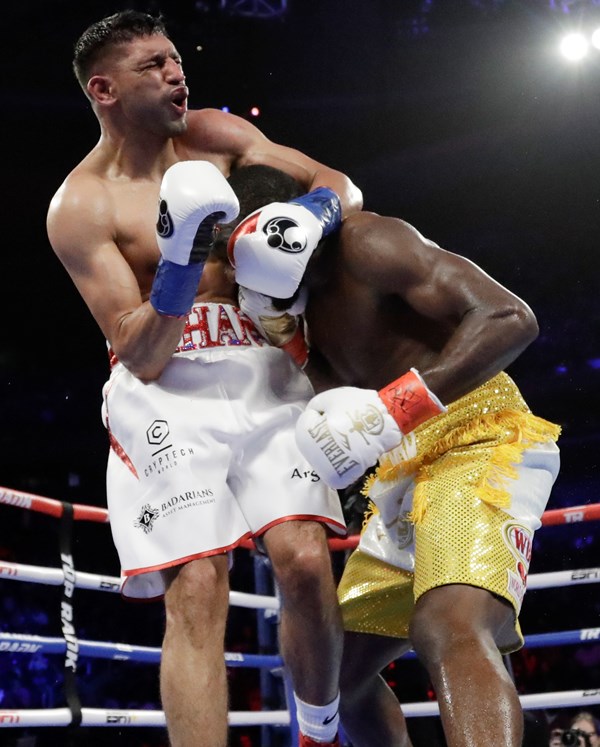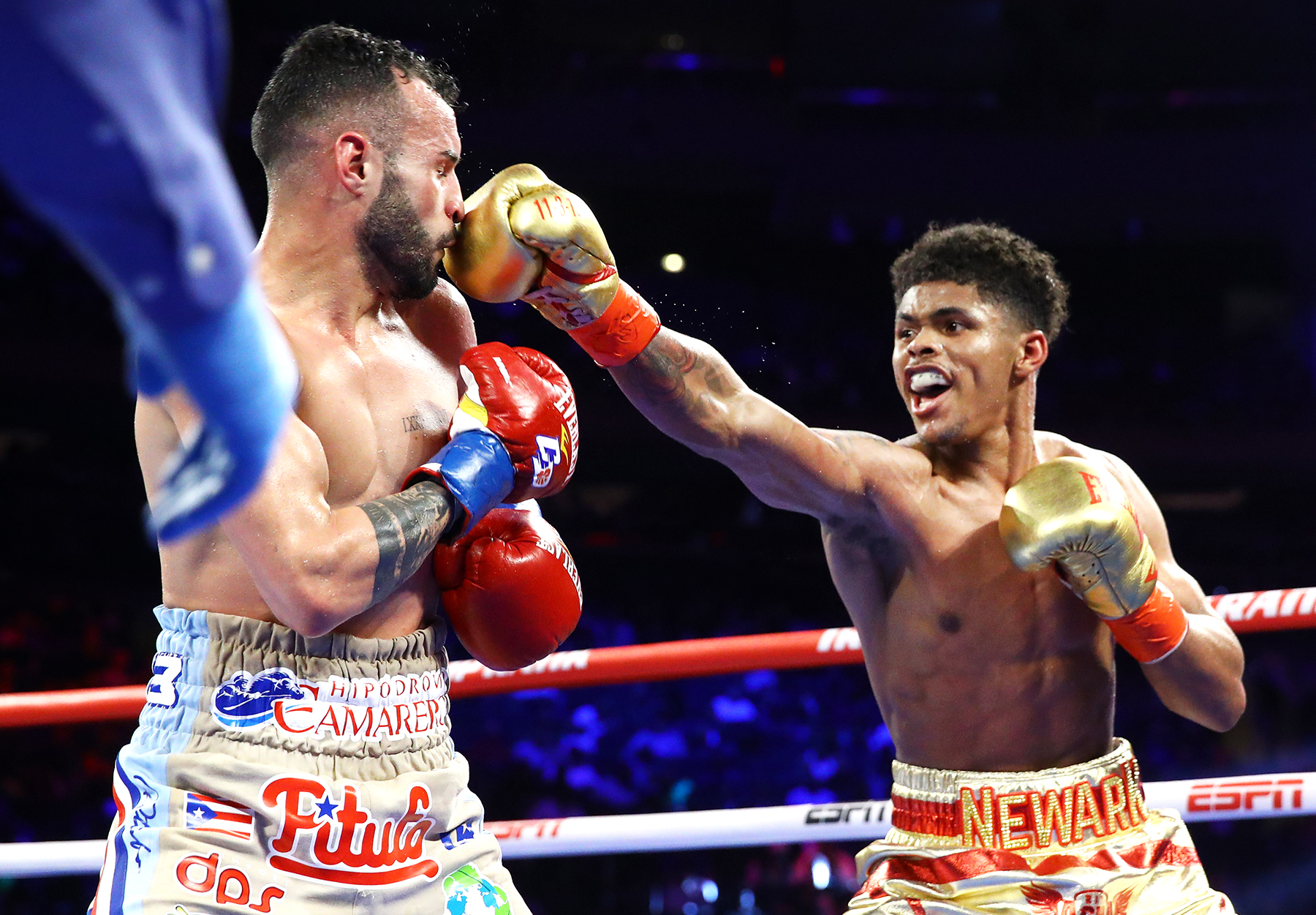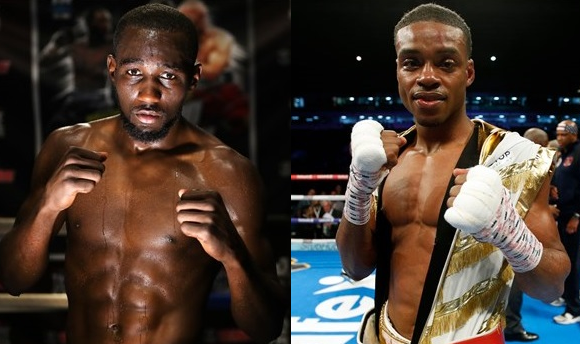A Blow To The Balls
It was fitting that Bob Arum concluded the in-ring portion of ESPN’s Crawford vs Khan main event. There he was: a shrunken, bleary-eyed 87-year-old, howling about Al Haymon as he insisted that his team really wanted Errol Spence next. Arum’s protest concluded a lousy night, whose low point was Amir Khan quitting because a blow landed on the periphery of his groin. The near-penis punch didn’t seem to validate a stoppage, but it did yield a fine explanation from Khan’s manager, Virgil Hunter, who invoked Amir’s ‘testicles’ as the reason things stopped when they did. This word, and the frank authority with which he tendered it, was satisfying in itself, but it perhaps functioned best as a metaphor for the entire night, which was, in every sense, balls.

It started with the broadcast. With HBO and Jim Lampley gone, we are left with ESPN and Joe Tessitore. We’ve giggled at Lampley’s crying non-sequiturs, but this change is like downgrading from an expensive car to a facsimile of one piloted by a person who talks for the entire drive and can’t see the road.
Tessitore, who suffered a neuro-cardiogenic episode during the broadcast, only to resume his duties later on, repeatedly referenced the grand stage provided by Madison Square Garden as proof of the night’s importance. It doesn’t matter whether a prizefight takes place in Manhattan or on the Isle of Man, only that what transpires is interesting. And in the absence of interest there was an uninteresting absence: of competitive boxing, of relevant analysis, of recorded interludes more illuminating than the obligatory piece in which Khan talked about replacing fame with faith.

But, as is often the case in boxing, over several hours ESPN’s cheerleading alchemized Arum’s excrement into gold. This predictably manifested in the meta: discussions of legacy, appeals to the past and “what this all means” in the grand sweep of boxing history. Sports consciously soak themselves in this stuff to aggrandize the present, and particularly so when the present can’t live up to the past. Saturday wasn’t a noteworthy addition to the history invoked by ESPN, but a card people will soon forget — one, it should be noted, which couldn’t sell out the arena whose stage supposedly proved its worth.
And why would it have? Admittedly, the main event was tantalizing. This is not because it promised to be competitive, but merely for the contrasting styles of its principles. Amir Khan is a recklessly talented, bravely deluded, frequently tactless fighter with a China-doll chin, while Terrence Crawford is a dead-eyed savant. It was taken for granted that Crawford would win, but the violence portended by this stylistic duel at least vowed entertainment. And the fight did have its moments — until a low punch crystallized for Khan that further damage wasn’t necessary.
In the past, Arum has said that undercards are only important to a minority of fans. A survey of Saturday’s matches affirms his commitment to staging mediocrity. One-time prospect Felix Verdejo, his cheekbones birthing tumours, won a split decision in which two judges scored a tie while the third inexplicably gave him a six-round edge. Next, Shakur Stevenson shut out Christopher Diaz — a sharp performance which prompted Tessitore to assert that Stevenson was now appointment viewing. He is a fine young fighter but a chasm exists between his style and the rabid interest it purportedly holds for fans.

After that, Teofimo Lopez stopped a Finnish boxer name Edis Tatli who hadn’t fought in 252 days. He did so with a body shot that landed – as Timothy Bradley pointed out — not to the liver, but on the other side of Tatli’s abdomen. As with Khan, this blow didn’t seem requisitely severe to stop a fight, but Tatli, who hugged Lopez between rounds in a show of supplicant sportsmanship, probably wasn’t trying to win anyway.
It was Bradley who was the viewer’s most reliable steward on Saturday. Between Tessitore’s talking and Mark Kriegel’s tiresome gravitas, the former boxer gave ESPN’s broadcast some needed realism. One of Saturday’s better moments came when Tessitore asked what came next for Verdejo. An honest fighter turned truthful broadcaster, Bradley paused, as if to say “I don’t know.” It’s instructive he hadn’t thought of this question in advance. His answer might also have been read as “I don’t give a fuck.”
Let’s return to Bob Arum, who may one day position Verdejo to be Vasyl Lomachenko’s next win. Nearly 90, he still projects an impressively dishonest bearing. For some people, the passing years place a greater urgency on truth: of getting things right in the short amount of time we have on this earth. Conjecture sees Arum smirking at this idea, because late into his ninth decade he’s still playing power politics in the fight game, either unaware of, or more likely indifferent to, the utter apathy fans have for why fighters with different promoters can’t face one another.

Because this is professional boxing, there’s something appropriately stupid about fans being deprived of matches because of Bob Arum and Al Haymon. Even less sensible is that Haymon, who at times has nearly controlled an entire sport, could do so without communicating to fans what his long-term vision for it is. And yet, like helpless addicts, we all reliably return, resigned to drink whatever swill the promoters and network du jour have pissed into the trough.
Of course, boxing has always been this way. Between super fights – say, Terence Crawford versus Errol Spence — fans receive what we did on Saturday, where bad is dressed as good and we’re told to be grateful that Bob Arum and ESPN staged a laughably priced pay-per-view for our benefit. It matters nothing what the intelligentsia thinks, only that the powers’ lies are persuasive enough to rope in the larger segment of fans who mostly don’t care about boxing, but whose patronization secures the marketing money required to make a super fight unavoidable.

It is impossible to consider oneself a discerning fan and enjoy boxing without feeling taken advantage of. But the sport’s economics are inflexible to change, just as Bob Arum is impervious to truth. Beyond enjoying professional boxing in those rare moments when enjoyment is possible, the role of the invested fan, it seems, is mostly to raise hell that specific matches – say, Terence Crawford versus Errol Spence – don’t get made, and with sufficient consistency and volume that enough casual fans agree that ‘this fight just has to happen.’
When the herd consensus emerges, so does the money. Promoters will ooze over this great groundswell of interest, but for those who gave the movement life, the truth is more cathartic. Call out their bullshit loud enough, and you stop feeling as though ESPN and Bob Arum have punched you in the dick. — Eliott McCormick





